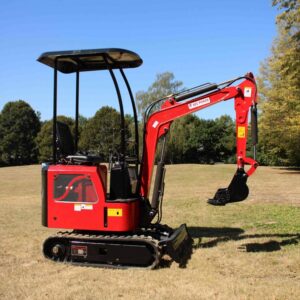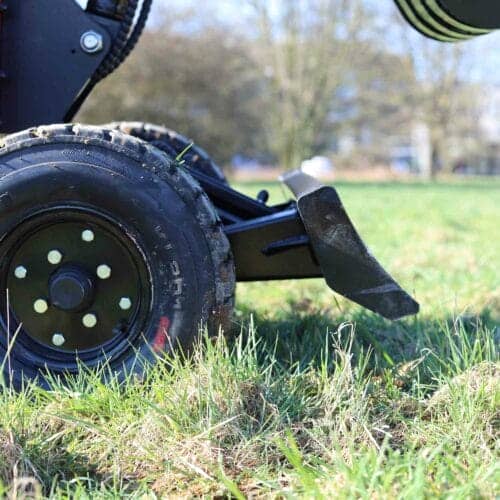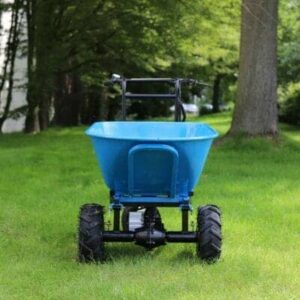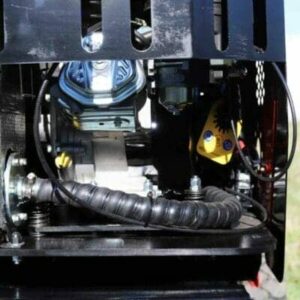In order to differentiate between excavators, there are basically two criteria that are particularly relevant: On the one hand, the size of the excavator and, on the other hand, the undercarriage of the excavator. When it comes to the undercarriage, a further distinction is often made between tracked excavators and excavators that drive on tyres.
Tracked excavator, 4-wheel excavator or walking excavator – Which mini excavator is the best? What are the advantages and disadvantages of the individual models? For what kind of work are the different excavators suitable? These and some other questions will be answered in this article.


Tracked excavator
The most common excavator is the track excavator, which is also called a crawler excavator. This type of excavator is driven by an integrated crawler track, which also gives the excavator a higher weight. In addition, a crawler excavator can be used in a variety of ways and, due to its compactness, looks good even on small, cramped construction sites. Mostly they are used for smaller excavation work, such as dredging ponds. But is this mini excavator the best one for you?
Due to the large bearing surface of the tracks, the weight of the track excavator is evenly distributed, so that it has a firm footing even on muddy and uneven ground. This helps to ensure that the crawler excavator can be used reliably and with good drive even on loose rock. However, it should be noted that the wear of the tracks is accelerated by working on harder ground.
However, the crawler also causes damage in loose soils. In particular, for example, when turning on the spot on lawns. If you want to protect your ground, the 4-wheel excavator may be an ideal alternative for you.
4-wheel excavator
As already mentioned in the previous section, 4-wheel excavators are more suitable for work on a firm and stable surface due to their smaller ground contact area. In addition, the 4-wheel excavator is characterised by better manoeuvrability. Due to the wheels, the excavator is much more flexible and has better manoeuvrability. At the same time, working with it is much gentler on the ground and the subsoil is less stressed.
However, another disadvantage could be that the height of the tyres means that you lose some depth when digging and that the four-wheel excavator is not quite as stable as a track excavator due to the low contact surface.

Walking excavator
The walking excavator is a standing excavator, as it is mainly used in a standing position. Like the other excavators, it has a rotating upper carriage. However, the undercarriage has a slightly different design. The HZC Power walking excavator has two tyres on the rear axle. At the front, however, it has a walking leg. This allows the walking excavator to move mainly with the help of the excavator arm and the rear tyres.
Its great advantage is that it stands securely even on slippery and soft ground and is therefore particularly suitable for areas that are difficult to reach. On the other hand, it is poorly manoeuvrable on very hard ground or even asphalt roads.
Track excavator, 4-wheel excavator or walking excavator – Which mini excavator is the best?
For more information about the different excavators, please also take a look at the individual product pages. Click here for an overview of our excavators. For more information on the topic of excavators, we can recommend our blog category “All about the mini excavator”. I hope that we have been able to help you clarify the questions “Track excavator, 4-wheel excavator or walking excavator – Which mini excavator is the best?



